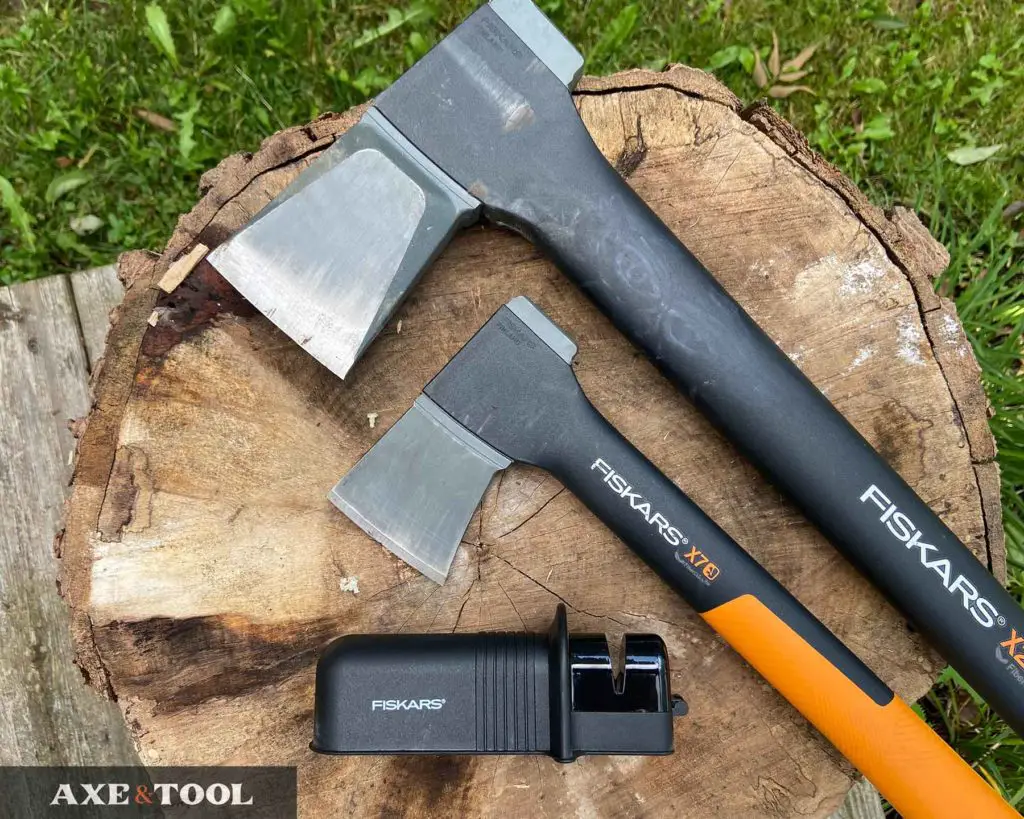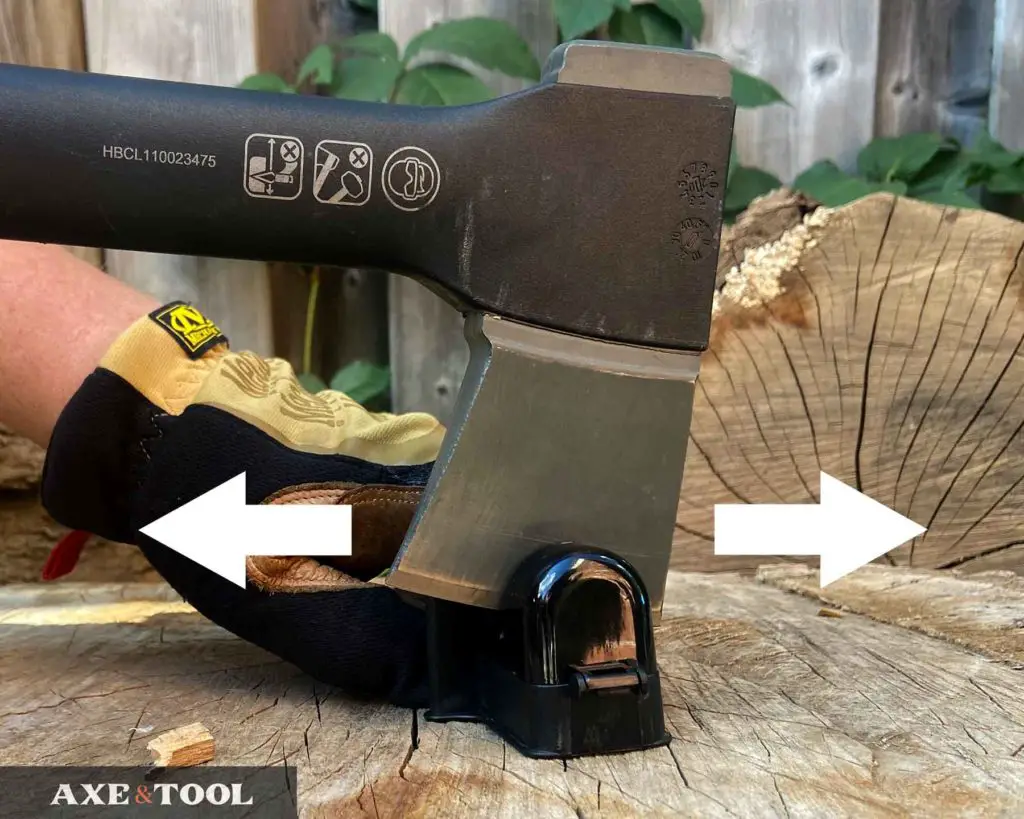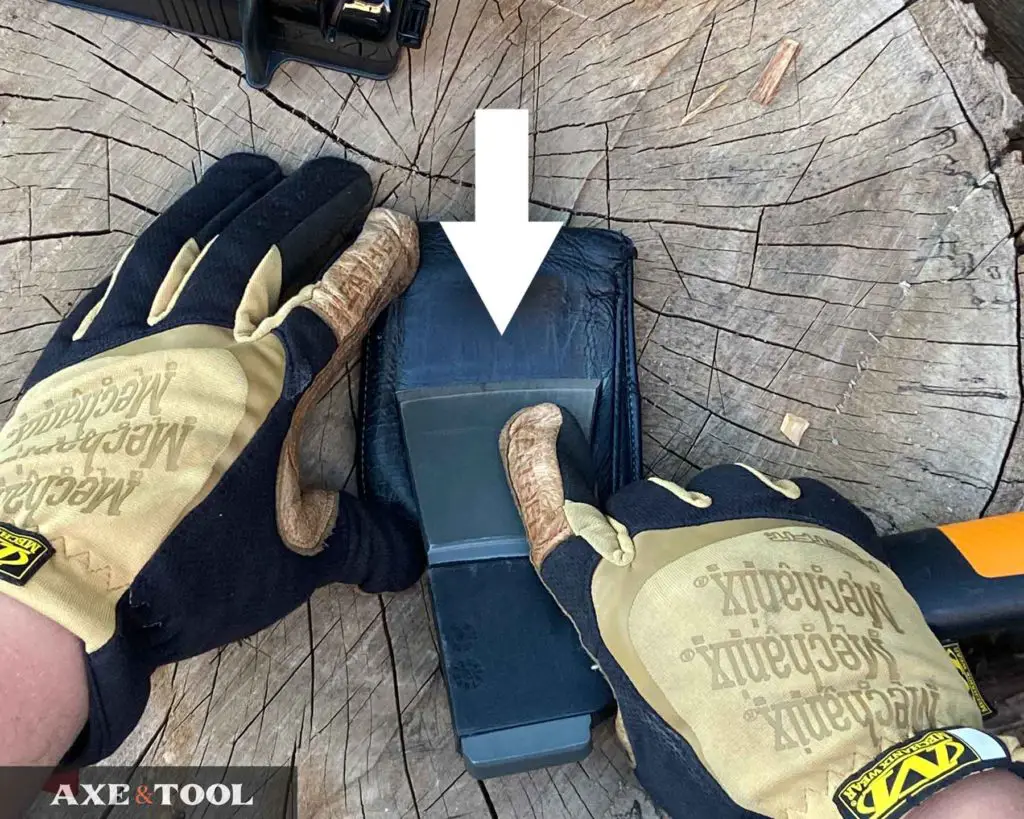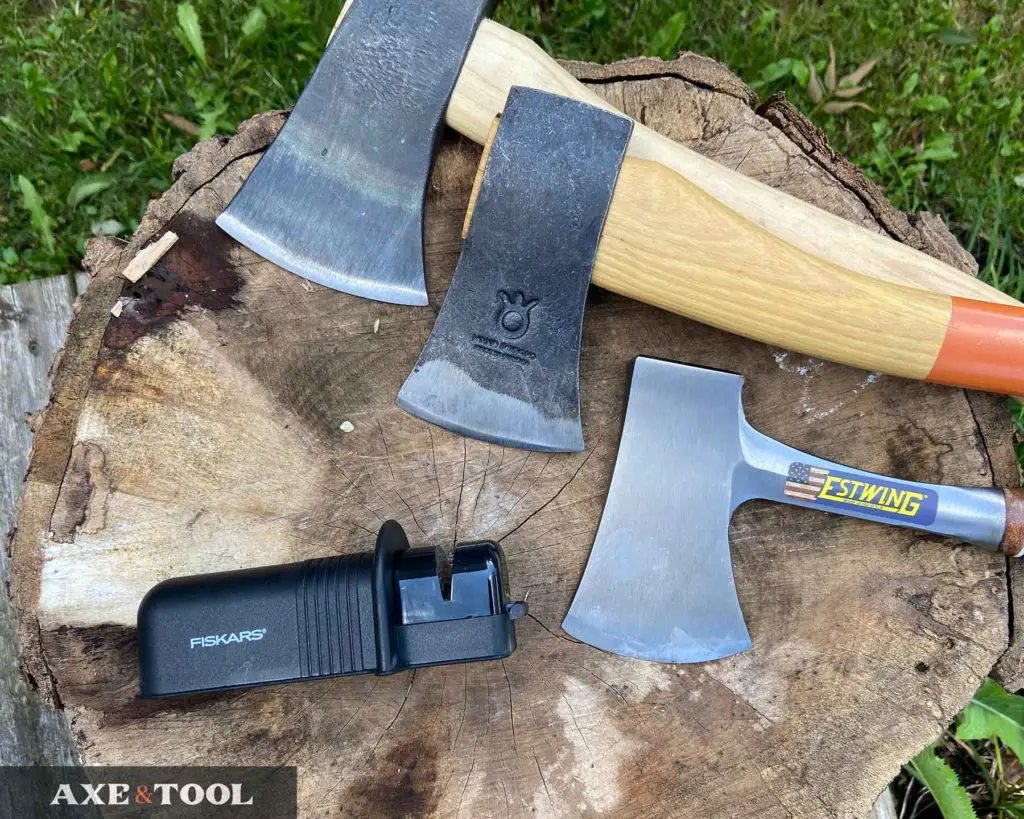How to use a Fiskars Axe Sharpener

I have to admit I was surprised by how well this cheap little sharpener worked. You can get a razor-like edge with a sharpening stone, but building that skill takes a fair amount of practice. For a quick edge, the Fiskars sharpener works well.
So while I encourage people to learn to sharpen “properly”, sometimes it’s hard to beat a 60-second method with no learning curve.
Note: I only recommend the Fiskars Sharpener for Fiskars or Gerber axes (they are the same axes). I tried it with others (more on that below), but the results were inconsistent.
What to expect
The Fiskars sharpener is dead simple and will easily fix a dull or rolled edge and even small nicks, returning your Fiskars axe to near-shaving sharp.
What it will not do is fix chips or gouges from the edge. The sharpener only touches the first 1/32″ of the blade (or less). So it will sharpen, but it won’t re-profile or repair the edge from larger damage (unless you spend A LONG time rolling it back and forth).
For those larger chips, you will likely need to get an axe file to work the edge back.
Learn how to reduce chipping and fully maintain your Fiskars axe here.
Fiskars sharpener instructions
- Hold the sharpener down on a flat surface with your off-hand.
- Place the edge of the blade between the ceramic disks.
- Keeping light pressure on the axe, roll the blade back and forth through the disks around 30 times.
- Examine the edge, looking for rolls, nicks, or burs, and repeat clean the edge if needed

Tips when using the Fiskars sharpener
When you are examining the edge you should see the newly sharpened bevel as brighter steel. Make sure it is a constant depth/width. Any narrow or non-shiny areas should be sharpened more.
Moving the axe back and forth IN the sharpener is the fastest way, but it will likely miss the very tips of the blade (heel and toe). So you may just need to do a few additional strokes that fully run out of the sharpener (in both directions) to get a full edge to sharpen.
Technique for sharpening big Fiskars axes
I’ve found it can be awkward to try and sharpen the big axes higher up, and you get a less even or complete motion. I would end up just doing a bunch of partial strokes. The big axes are easiest to run fully through the sharpener if it’s lower to the ground and you are positioned above it.
Set the sharpener on a flat surface at about knee height, and lean over it so you are looking down at it. Then holding the axe below the head you can just use your whole arm to generate a nice easy motion back and forth covering the whole blade.
Cleaning the edge after sharpening
Any pull-through sharper may leave little wires, burs, or particles of steel clinging to the edge and the Fiskars is no exception.
It’s not a big deal, but there is a chance these metal bits can immediately cause damage or dulling again if they aren’t removed.
You can lightly run the edge through the sharpener a single time (maybe it comes off). But the best way to clean the edge is through stropping.
All you need to do is drag the edge of the blade backward across a softer material to pull off and remaining bits of steel and de-bur the edge. Flip back and forth to do both sides of the edge multiple times.

Ideally, leather should be used for stropping, but you don’t need to buy a dedicated strop. I use an old wallet for my axes. You can use an old belt, purse, leather pants – anything.
If you don’t have leather you can use denim, paper, or honestly even just drag it across a flat wood surface.
Sharpening other axes with Fiskars sharpener?

I tested the Fiskars sharpener on a few other axes I had laying around that were also a little worn from testing. There was a classic Estwing sportsman, Council Tool flying fox, and Husqvarna hatchet.
The sharpener seemed to work okay on the Estwing, but not on the other two. They have a different edge profile from a Fiskars axe. They could be tweaked to match the edge of the sharpener, but I don’t plan on using them with it (so I didn’t bother). And Even for the Estwing which worked it required a bit of a different technique.
Fiskars axes have a very flat bit (blade), and all of these axes have much more curved profiles. As a result, it’s harder to do one nice clean motion from one end of the blade to the other.
I ended up rolling back and forth through sections of the blade at a time, gradually moving up and down the full length. It seems to have worked just as well.
Please comment below If I missed something or if you have any questions. I do my best to respond to everyone.
About the author:
About the author:
Jim Bell | Site Creator
I’m just a guy who likes axes. I got tired of only finding crap websites, so I set out to build a better one myself.
I’m also on Instagram: @axeandtool



Hey Jim,
Just a note to thank you for a great article – so helpful and thorough. Appreciate you taking the time to put it together to help others. Also your “About the Author” writeup and picture just made me smile – who says there aren’t good guys out there anymore? All the best – Carol in NC
Ha, Thanks you Carol! I did my best to not look menacing while holding an axe. Glad you found the post helpful, thanks for the comment.